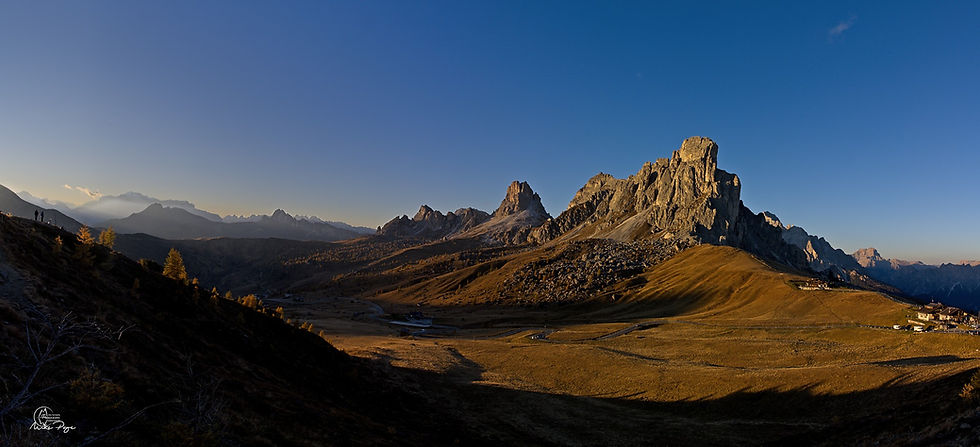Embracing Imperfection: Exploring the Concept of Wabi Sabi on an Autumn Trip to the UK
- Mike Page
- Nov 5
- 4 min read
Wabi-What-Now?
A friend recently suggested that I look into the Japanese philosophy (?), concept (?), aesthetic (?) of wabi sabi in the context of my photography. As with most oriental concepts, it's nigh-on impossible to arrive at a direct translation (which is why most people don't), but roughly speaking wabi refers to a humble, simple life and the beauty found in modesty and solitude wheras sabi pertains to the beauty that comes with age, wear, and the passing of time, like the patina on an old object. Put them together and you end up with an aesthetic philosophy that 'finds beauty in imperfection, impermanence, and incompleteness'.

It's a welcome departure from the pursuit of technical perfection that I have been embarked on for the last couple of years. The aesthetic has two main pillars, one is embracing technical imperfection such as the use of a cracked or slightly foggy lens, soft focus or images which accept the camera's dynamic range limitations of capturing all of the light and dark in a scene. The other is to embrace imperfection in the subject matter being photographed. Instead of only seeking out a perfect mushroom or leaf, for example, it can involve choosing an imperfect specimen and trying to find and reveal the beauty buried within.

The Berlin-based photographer Sima Zureikat from FromLight2Art explains that “producing technically beautiful images will serve to accentuate the beauty within the decay. and I love the challenge inherrent in that idea: Embrace technical excellence, whether in terms of sharpness, exposure or composition in order to reveal the beauty within.
The American photographer Joshua Smith from the YouTube channel Shizen Style points out that “Something may not be sleek or clean, but it can still be perfect… Everything is perfect as it is in its own way.” I don't talk a lot about my Christian faith here on the blog, mostly because it doesn't impact my photography directly, but this idea of hidden beauty, of everything being loveable despite apparent imperfections resonates so strongly with my understanding of how God loves us all deeply despite our flaws that it would be dishonest of me were I not to make the connection.

Although it's easiest to see how the concept of wabi sabi might be associated with nature photography, there's definitely space for it in the urban environment too. It's just a question of keeping your eyes (and mind) open to seeing that moment of beauty.


Some More Concepts
Smith goes on to explain three further intriguing concepts in the wabi sabi in his video "8 Steps to Master Local Photography", namely Ma, Fukensei and Yūgen, all of which help to further explain how this aesthetic can impact our photography.
Smith describes Ma as 'the space between things', allowing what we would describe as negative space in an image. It's letting the subject matter breathe and not feeling obliged to fill the whole frame for the sake of filling it. This can bring serenity and calm to an image. The hint of contrast in the clouds in the image below helps to strengthen the impact.


Fukensei concerns assymetry and irregularity and can serve to generate tension in an image. Symmetry can be a powerful tool in photography. When we photograph a reflection in a body of water, conventional wisdom says that the horizon should be planted vertically in the middle of the composition to strengthen the image. When we allow a random element to creep in, it can really enhance an image by breaking the rules and upsetting the natural order.


Yūgen describes the element of mystery that can lurk in the mist or the shadows. An image doesn't have to show everything and leaving some things to the imagination can be a good thing. We (landscape photographers) tend to be obsessed with considerations such as dynamic range, insisting that we must be able to see all of the details in both the deepest shadows and the brightest highlights, a tall order for even the largest camera sensor and one that can sometimes only be solved by combining multiple exposures of the same scene in the digital darkroom. But why does it have to be that way? Why can't we leave some things in the shadows?, some details to the imagination?


Moving Forward
I sense myself at the beginning of a new photographic chapter with this concept and it's going to be fun to explore how I can incorporate this into my practice. It's freeing not to insist on perfect light for every shoot. Not every image has to 'wow' to reveal the subject's beauty. Photographs should be allowed to soothe and calm as well as to impress and inspire awe.
Watch this space.







Comments